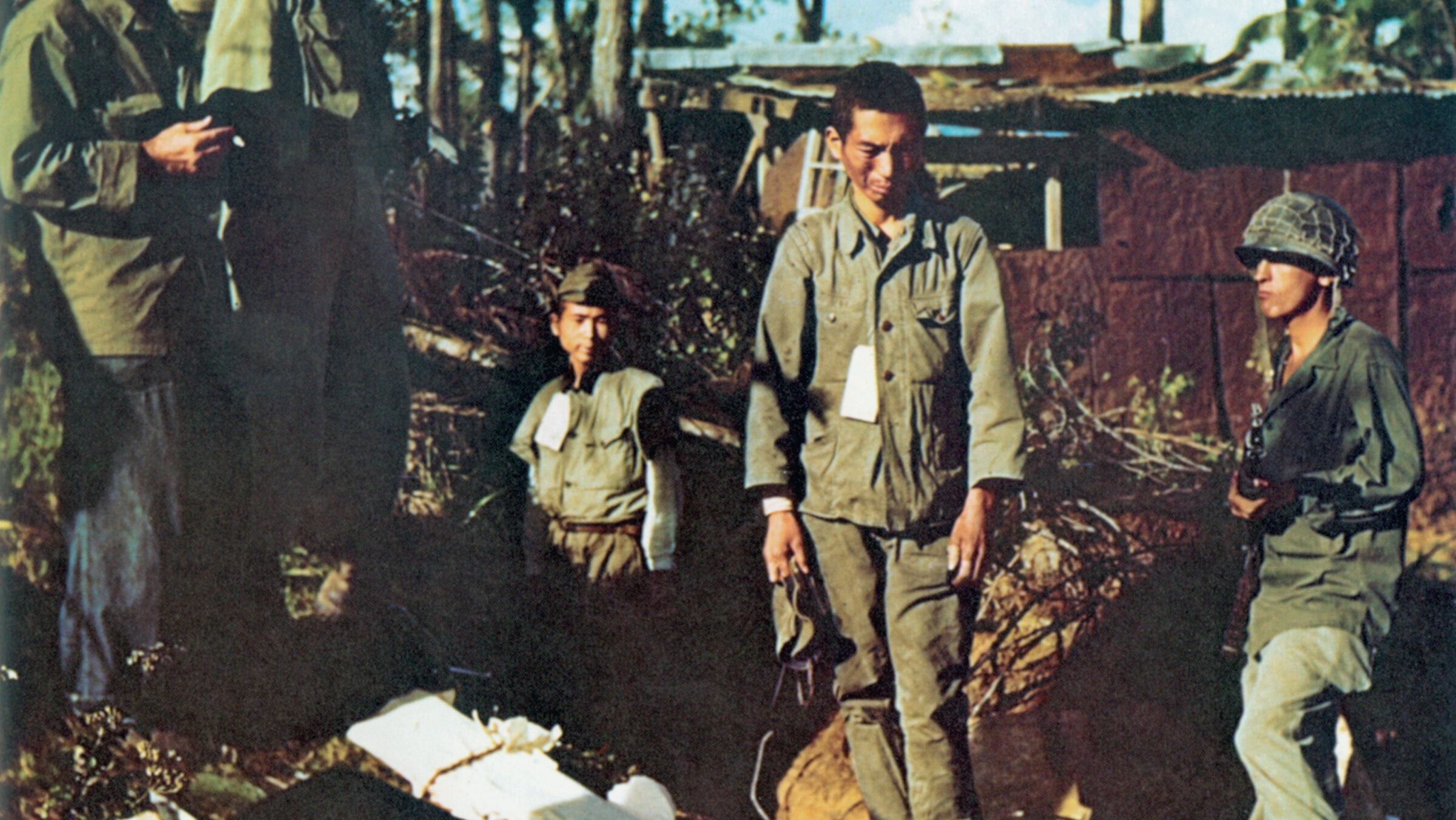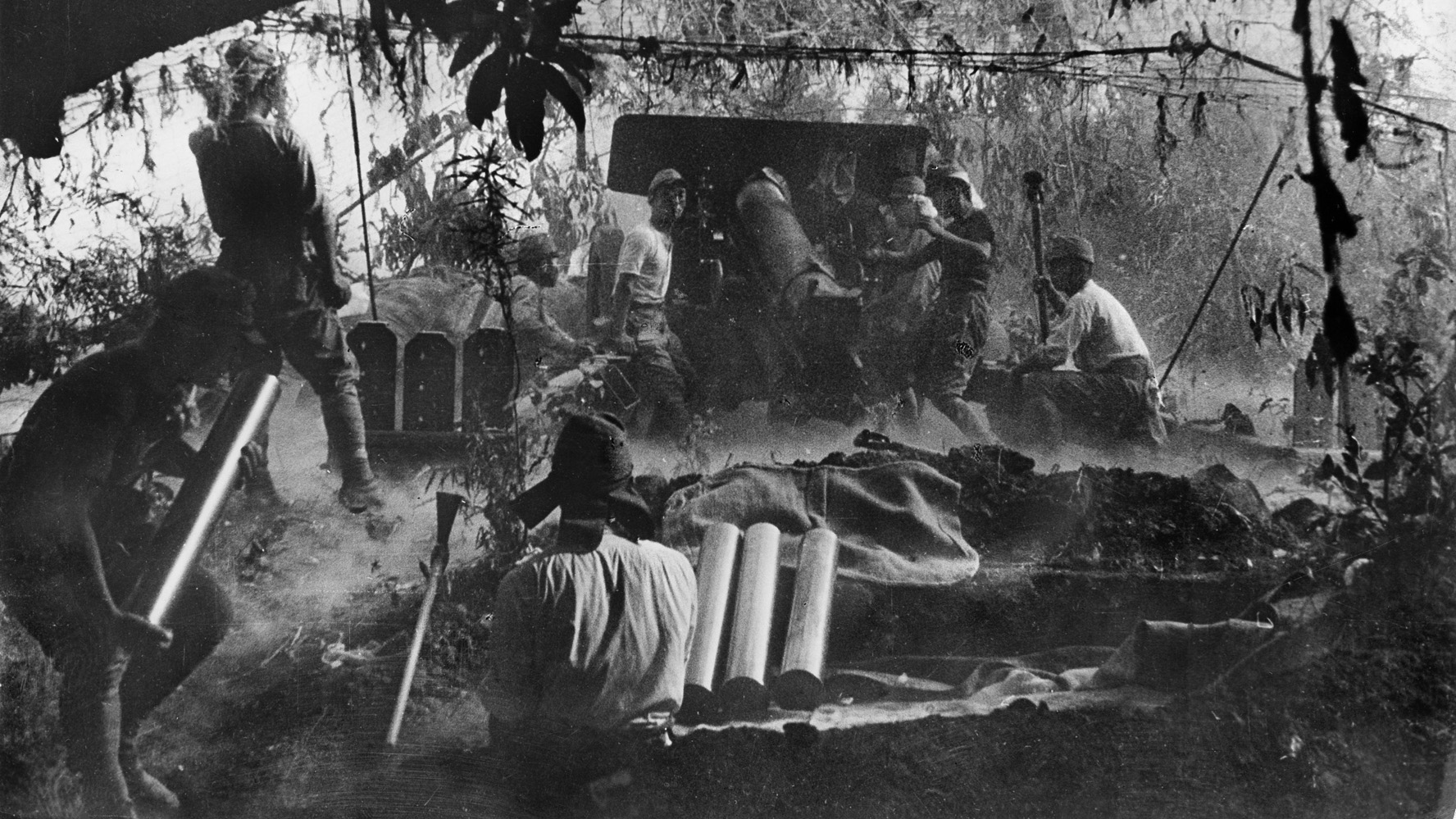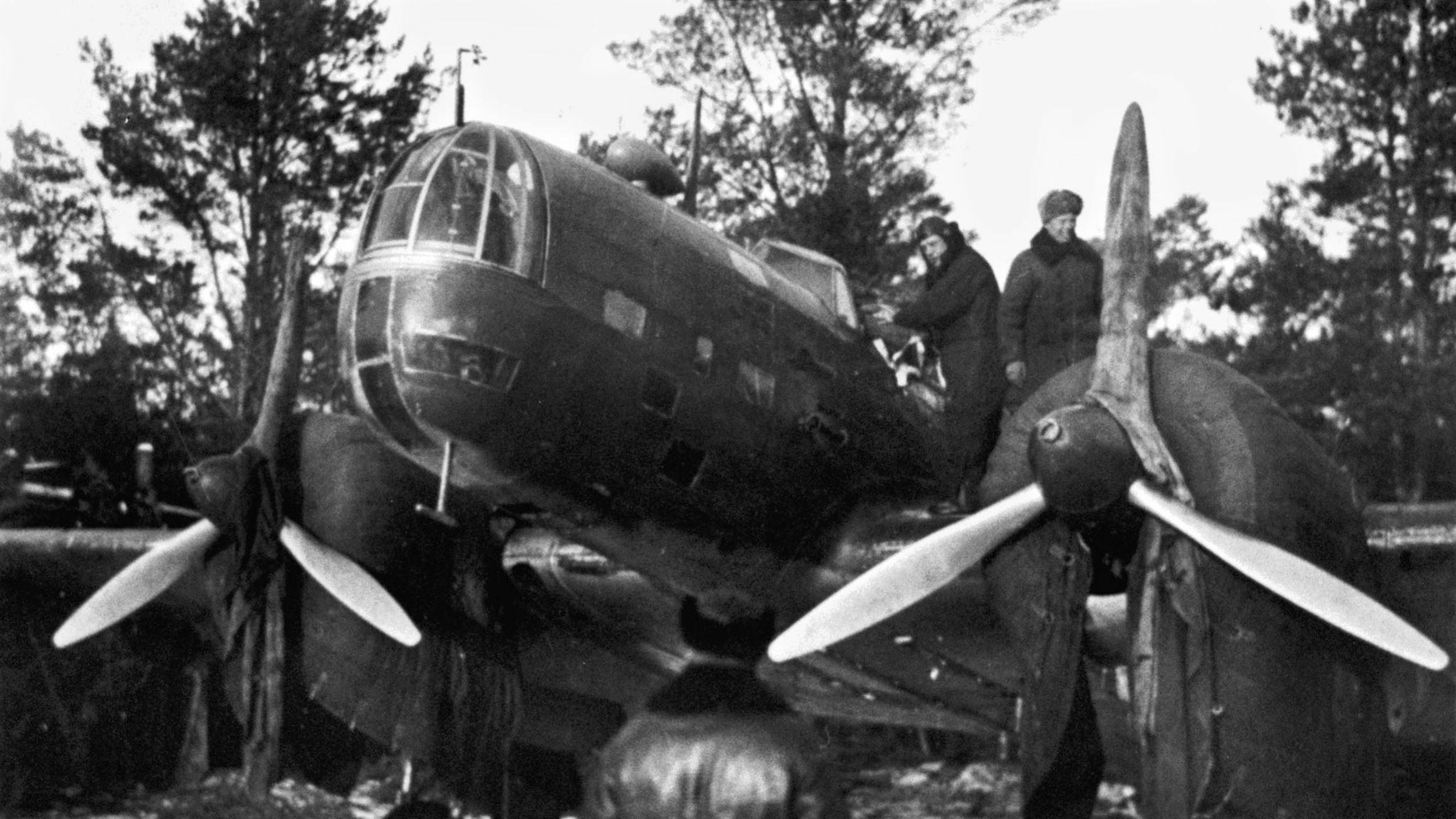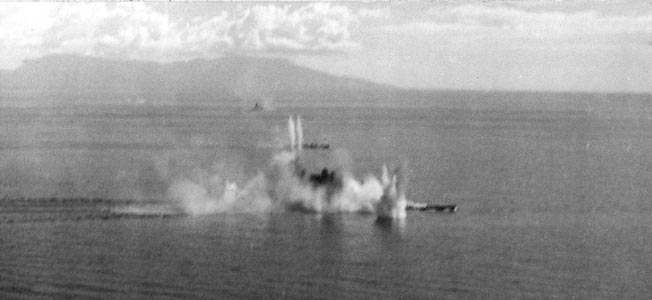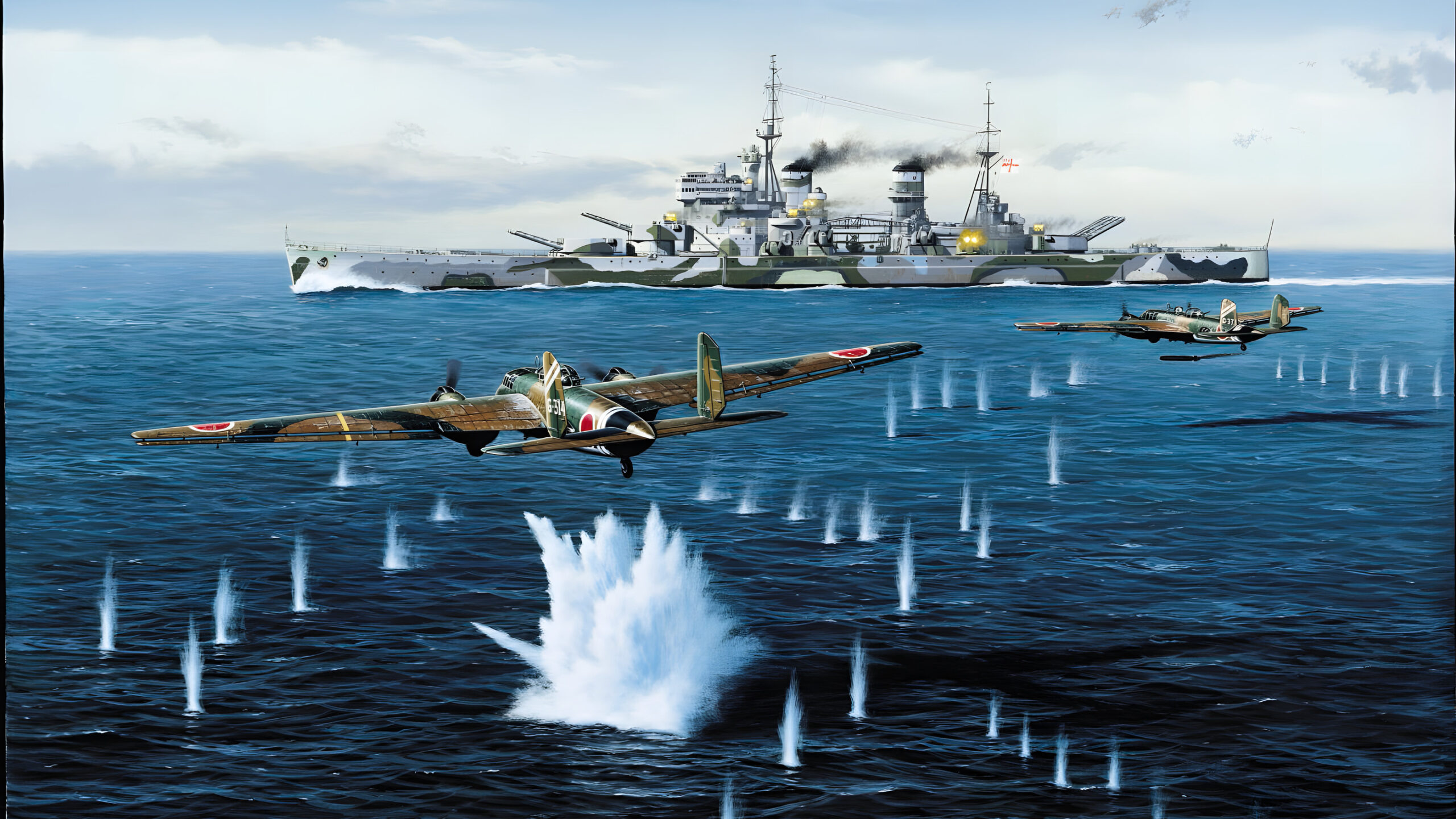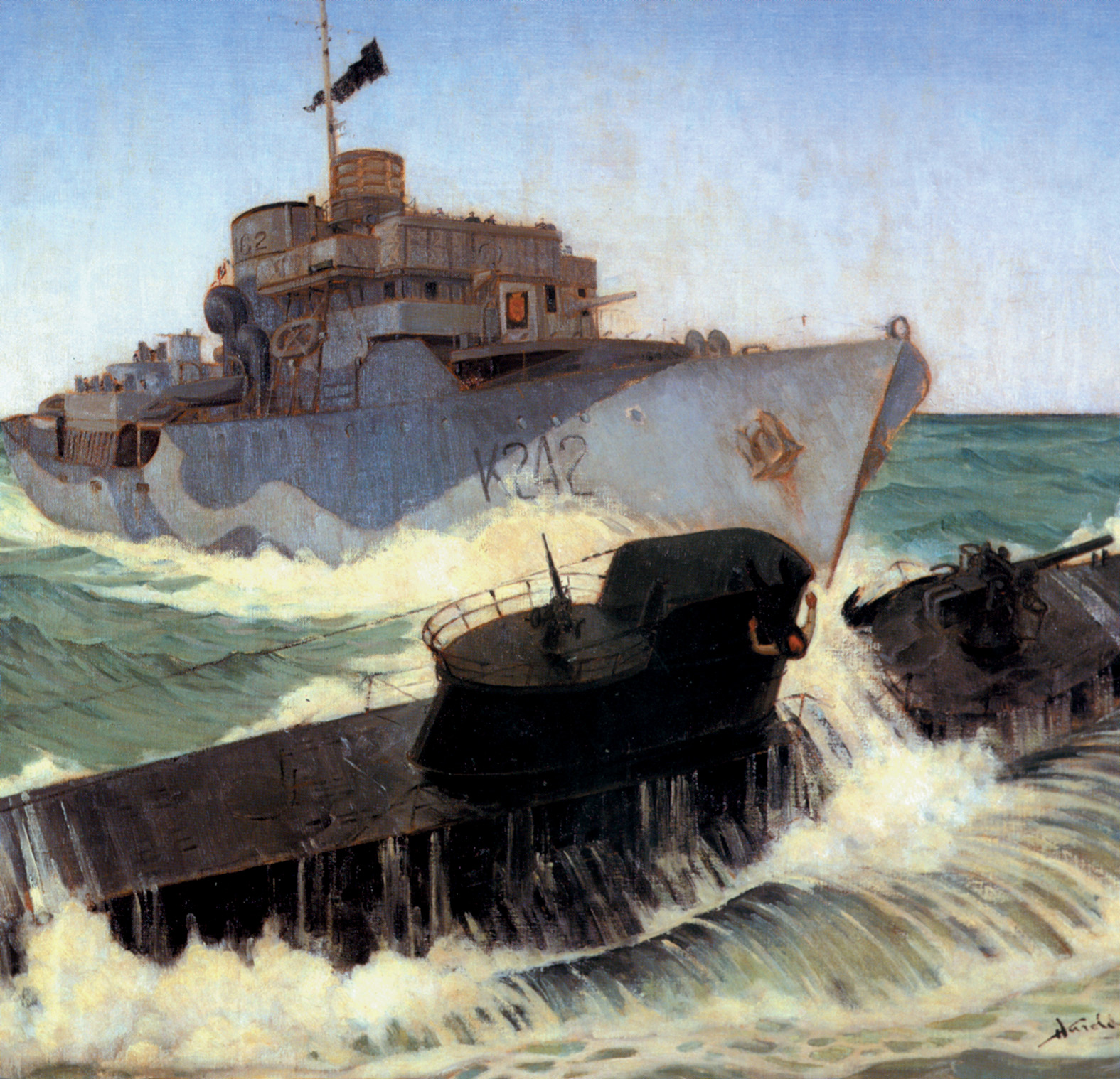By Phil Zimmer
German engineer Hellmuth Walter stretched his shoulders, rubbed his face, and eased his hat back on his head as he walked down the wooden dock toward a covered deck. His right-hand man, test engineer Heinz Ullrich, was already there taking in the brisk, spring breeze that was sweeping into the Schlei Estuary from the nearby Baltic Sea. The sun was barely making its way above the horizon when a Swastika-marked Messerschmitt aircraft swept southward heading back from nearby Denmark, one more country that had just fallen to the Third Reich.
It was mid-April 1940, and the sun, indeed, was rising over a new world for the Nazis. Denmark, Norway, and half of Poland had fallen in recent months to the German onslaught. The Sudetenland, Austria, and Czechoslovakia had earlier succumbed to Hitler’s demands. Within months France and the Low Countries would fall to the Nazis, and the British Expeditionary Force would narrowly manage to escape the continent. And the engineering project that Walter and Ullrich were working on held the potential of bringing the recalcitrant British, and perhaps others, to heel as well as the war unfolded.
This was to be a big day, as they looked upon the experimental V80 “Walter Boat” that gently bobbed under the covered deck. This was a U-boat like no other. It was short and somewhat stubby, just large enough for a four-man crew. It was fish-like in design, with few external protrusions to impede its projected swift movement through the water. Walter had close ties with the Luftwaffle, and the boat’s vertical rudders and hydroplanes were controlled by a unit taken from a Junkers Ju-52 transport aircraft. He ingeniously used a depth-control apparatus from a torpedo for automatic depth-keeping.
The 80-ton experimental vessel was a high-speed underwater craft that would provide oxygen for propulsion when submerged through the use of a nearly pure form of hydrogen peroxide (H2O2). Walter had found that hydrogen peroxide in the presence of a suitable catalyst would break down into oxygen and steam at high temperature and expand, spinning a turbine and providing propulsion. Walter had touted the process as one that could eventually result in a high-speed submarine capable of underwater speeds of 25-30 knots, at a time when a leisurely Sunday bicyclist could easily keep pace with the speed of an average submerged vessel. The Walter Boat promised to revolutionize warfare at sea, enabling subs to work in conjunction with surface fleets. When the need arose, the fast subs could speed away and attack the enemy with repeated, guerrilla-like assaults from different angles.
The boat held out the promise of air-independent propulsion (AIP), which was the “Holy Grail” of submarine technology. Ideally, such a system would enable a submarine to operate without the need to surface or even use a snorkel to obtain atmospheric oxygen. AIP, or something close to it, would not be achieved until the launching of the nuclear-powered USS Nautilus in 1954.
Nevertheless, the Walther Boat’s World War II stealth-like underwater speed and propulsion system were revolutionary. The U-boats the Germans were then using were little more than updated versions of World War I vessels. They were basically surface-moving boats that used oxygen-gulping diesel engines while above water and yet were capable of making short, rather slow runs underwater using battery-powered electric motors. In fact, it was said that German World War I mariners would have easily and readily adapted themselves to the U-boats sent out on patrol early in World War II.
Walter’s heart was beating in his ears as V80 left its covered dock and eased into the estuary some 30 miles northwest of Kiel, where the experimental vessel had been constructed at the Germania shipyard in 1939-40. Walter was to rigorously push V80 that day in underwater trials in the shallow brackish estuary; before the trials were concluded, he had reached 14 knots in the restricted waterway.
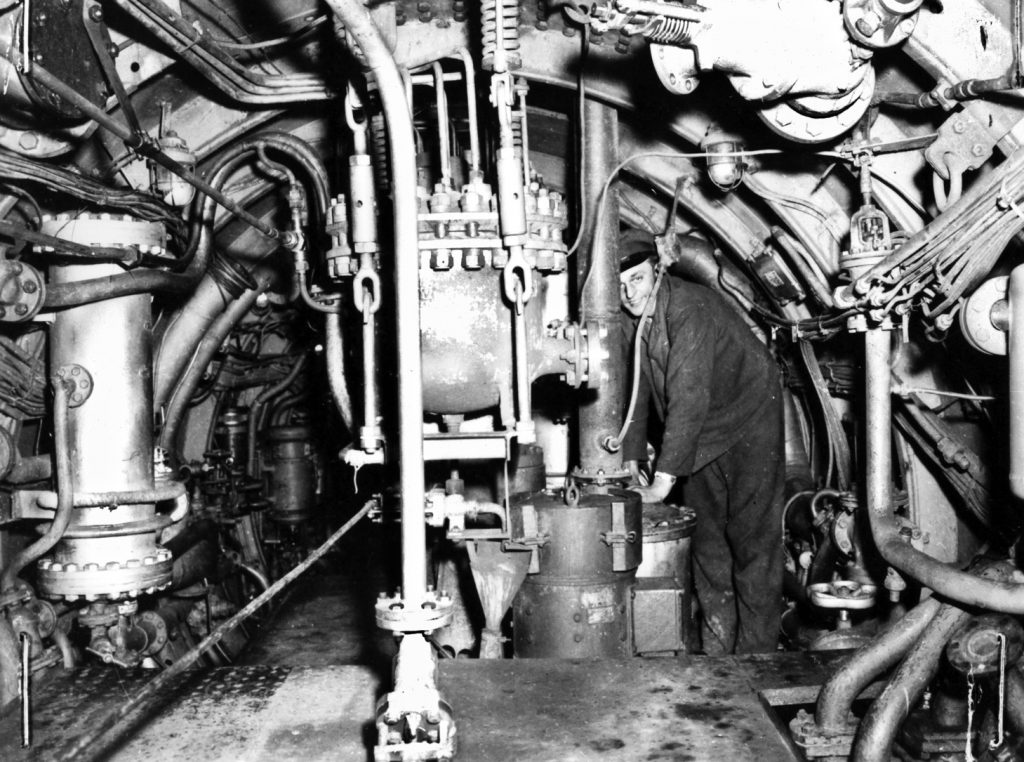
That fall, the promising trials were moved to a former Polish naval base at Hel so the experimental craft could attempt higher speeds in the Gulf of Danzig on the Baltic. There V80 reached the amazing underwater velocity of 28.1 knots, more than 4.5 times the speed of any other undersea boat then in use.
The engineers in the “K” office of the Supreme Naval Command were excited about the prospect of a fast, AIP submarine and advocated the immediate start of construction of six small Walter-type U-boats. The engineers met resistance from the heads of the U-boat department, who wanted the system fully proved first in a laboratory installation. Only then would it be allowed to interrupt the currently planned schedule of conventional U-boat production. The latter view won out, and a slower-paced development ensued.
The boat went through two design changes, which led to greater size and sophistication with each projected operational vessel. The third design saw the vessel move from 300 tons to 600 tons. A conning tower, forward hydroplanes, and an enclosed bridge were added, which slowed the boat from the 25 knots planned for the first operational model to only 19 knots for the third design—still nearly three times the underwater speed of existing U-boats.
In mid-February 1942, Germania was given a contract for a test boat The result of their efforts was the Wa201, a boat similar to Walter’s original V80 but with a sharper and more sloping bow to provide better surface speed. As with the V80, forward hydroplanes were dropped by Walter’s firm based on his experience in airplane design.
The design was thoroughly tested at the Hamburg Shipbuilding Testing Institute, and the steering and depth-keeping properties of the proposed rudders and hydroplanes were measured in a wind tunnel at the Hermann Goring Aviation Research Institute in Brunswick. These tests showed the performance of Wa201 was significantly better thanks largely to its enclosed bridge, balanced rudders, and Flettner ancillary rudders, which minimized the effort required to steer the vessel at high speeds. The Wa201 was to be some 37 meters long. It was to have two five-meter-long torpedo tubes and four torpedoes with a range of two and a third miles using Walter’s hydrogen-peroxide propulsion system.
Internal squabbling continued over the quantity and type of boat to be selected, and this necessitated the direct intervention of Admiral Karl Donitz, chief of the U-boat fleet, in the autumn of 1942 to bring about the awarding of contracts for 24 small boats using the Walter drive (hydrogen peroxide) system. Twelve were to be of the Wa201, designated Type XVIIB, and 12 of the WK202, designated Type XVIIG.
The construction of four test boats began December 1, 1942. It was a new, innovative model, and no special priority had been provided. Allied air attacks also hampered construction, so it was not until October 1943 that the first two Walter Boats, U-792 and U-794, were delivered. These boats were used for extensive training, and they reached submerged speeds of up to 25 knots.
Walter was not content with these smaller vessels, and he proposed a much larger 1,475-ton Type XVIII that would carry 23 torpedoes. Despite the superb performance of the Walter Boats, many in the German hierarchy continued to have severe reservations about the safety of using super hydrogen peroxide as well as the Reich’s ability to produce the amounts of fuel that would be needed for an expanded fleet of such boats, which consumed high volumes of the liquid at very high rates. For the larger vessel (Type XVIII), Walter had designed a double hull, one section above another in a figure 8 configuration, with the fuel filling the entire lower hull. But Germany simply did not have the time to resolve such design and engineering problems in the near future.
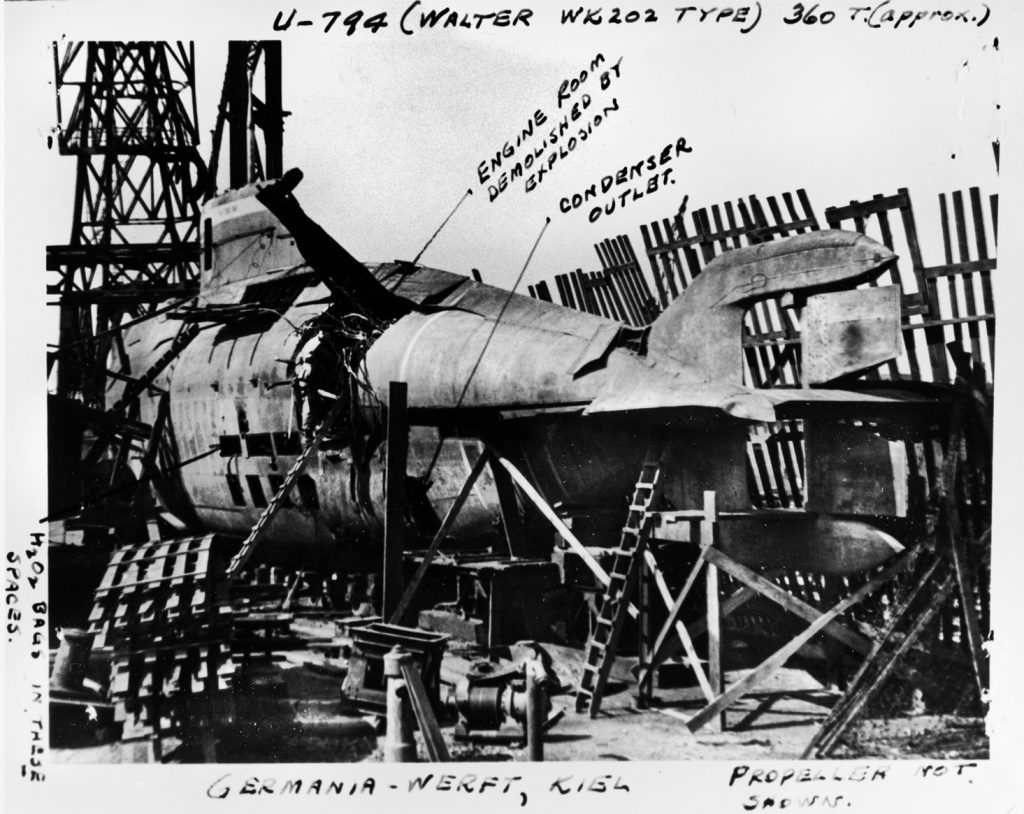
It is interesting that after the war, both the British and the Soviets experimented with a modified Walter system for submarine propulsion, and both nations abandoned the idea because of the dangerous and volatile nature of hydrogen peroxide. But both countries retained its use for propelling torpedoes, with the British stopping after the HMS Sidon tragedy on June 16, 1955, when 13 men were killed and seven others seriously injured when a Walter-system propelled torpedo exploded while the vessel was moored in Britain’s Portland Harbor. The Soviets attributed the August 12, 2000, sinking of their Oscar II-class Kursk that claimed the lives of all 118 men aboard to a similar mishap in the Barents Sea.
The Germans’ World War II project using the Walter system was about to be totally scratched when two engineers devised a surprisingly simple and rather ingenious solution to the problems. Other engineers argued that faster underwater speeds and longer ranges could be achieved by adding another hull full of batteries under an ordinary submarine. The additional batteries would provide the speed using already-existing technology and avoid the safety and design concerns of the Walter Boats. The larger, streamlined hull of Walter’s Type XVIII would serve as the design starter. The idea gave birth to the “electro-submarine,” which used the added battery capacity to propel the vessel quickly underwater for extended periods, enabling it to be a nearly purely underwater craft, relying for the first time on diesels primarily to recharge its batteries via a snorkel system. That stood in sharp contrast to traditional systems, which used diesel engines as the main source of power for a largely surface-operated craft while electric motors provided only short-term power when the vessel was submerged.
This new Type XXI boat proved to be the first true submarine, and an intermediate stage between the then-traditional submersible U-boats and later submarines running with atomic reactors. The naval high command gave a quick go ahead, and detailed theoretical calculations were completed by January 1943. According to the calculations, the projected electro-submarine would be capable of maintaining high speeds of 18 knots per hour for 90 minutes, or by dialing back it could cruise at five knots for 60 hours. This was a significant development, because the conventional Type VIIC—which handled the majority of the battle in the Atlantic—could only cruise at a submerged speed of six knots for 45 minutes or reduce to two knots for some 20-30 hours.
In short, the Type XXI held out the promise of being a “war changer” and did so using a readily available technology packaged in a somewhat innovative manner. It stood in sharp contrast to the Walter Boat, which would have required years of additional refinement and development, years that the hard-pressed Third Reich simply did not have available.
The new boat could cross the dangerous Bay of Biscay while submerged and avoid prowling Allied planes and ships, and it could then travel quickly into the vital convoy routes of the North Atlantic. The snorkel would only need to be extended every other day to recharge the batteries via the diesel engines. Although the Type XXI could not reach the rather amazing speeds of the Walter type, it could be produced more quickly and more efficiently using existing technology.
Production would not be easy. Allied bombing, shortages of materials, and existing demands on limited waterside construction space hampered construction. Skilled shipyard workers had been called away to the front, and the Russian campaign was consuming vast industrial resources for the production of tanks, artillery pieces, and the like. Furthermore, the Germans also saw the need to have a vessel with more torpedoes at the ready to help offset the heavy defensive ring that the Allies had developed to protect convoys. The new design called for six bow tubes and an innovative semiautomatic hydraulic loading system capable of reloading the tubes in some 20 minutes. In addition, the Type XXI was to be fitted with water-pressure-controlled depth-keeping equipment and new food-freezing equipment for improved crew comfort. New innovations in sonar and radar equipment were to be included, along with improved underwater listening equipment.
These innovations, coupled with teething problems and the pesky Allied bombing raids, were to present substantial planning and delivery problems with the Type XXI for Donitz and Armaments Minister Albert Speer. The ministry came up with a mass production line, with eight sections of the boat produced at 13 different sites and then transported via rivers or canals to the assembly points. The scale of the undertaking attracted the attention of the Royal Air Force’s photo reconnaissance units and resulted in an intensive bombing campaign that further disrupted the complex construction schedules.
It must be remembered that fierce internal power struggles were common throughout the Third Reich. As early as 1942, Franz Neumann, a former German labor lawyer who had escaped to West, described the Third Reich as a “non-state.” Economic historian J. Adam Tooze added, “The criteria of power were brutally simple: access to the Fuhrer, control of one or other means of violence, command of the means of production. Useful experts could seek a place for themselves among power blocs.”
Speer and his ministry provided one of the strongest power blocs late in the war. His efforts on behalf of submarine warfare did make some difference, with the first Type XXI launched on May 12, 1944, well ahead of the original schedule. That submarine, along with the next half dozen, had defects that prevented them from becoming fully operational. These craft were pressed into service, nevertheless, for training and experimental purposes while the Navy awaited the delivery of the next batch of submarines.
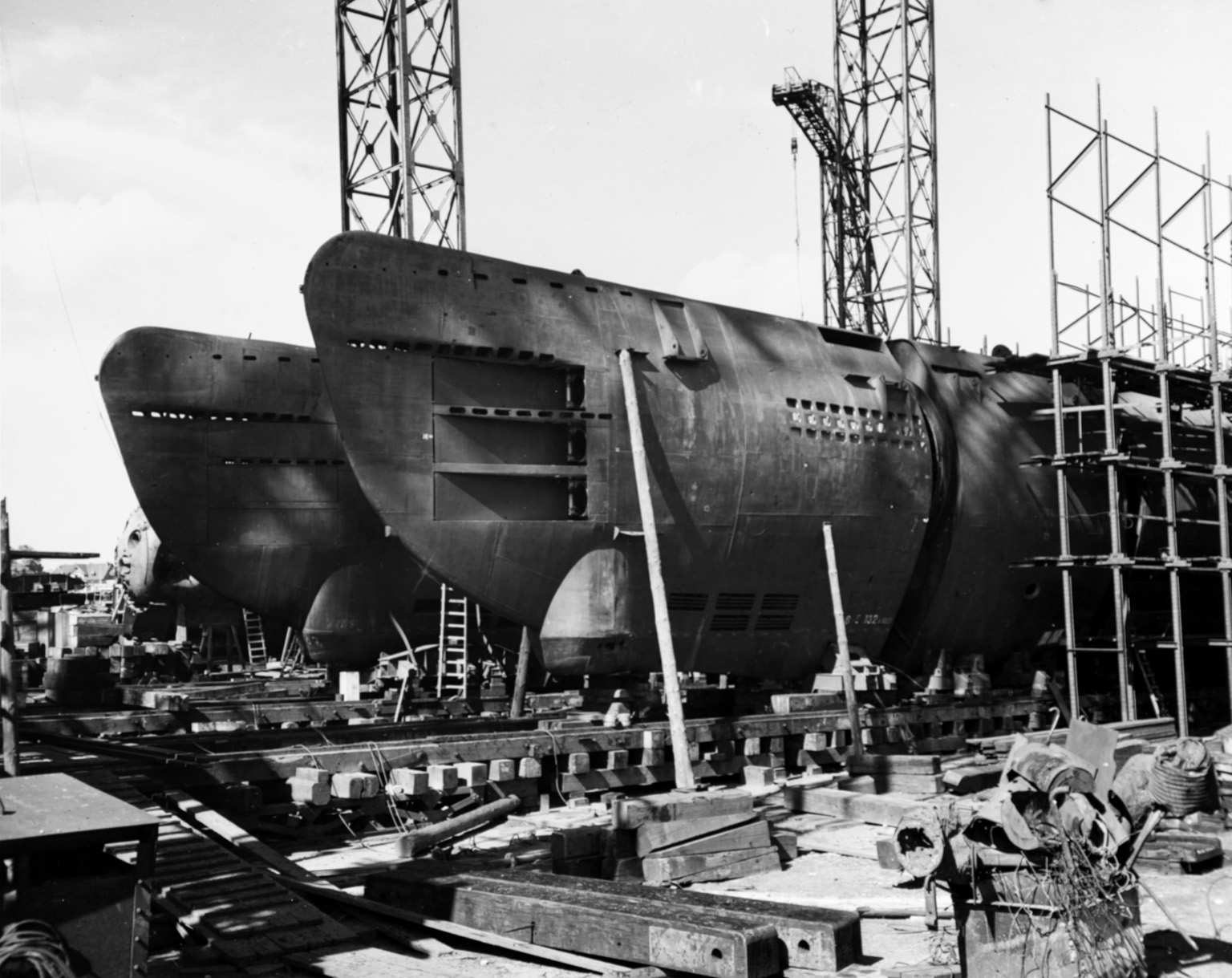
That August, Speer had boasted that despite Allied bombing, the output of U-boats would be tripled by the end of the year. But, says Tooze, “There was no part of the German war effort in which the gulf between armaments propaganda and reality was more extreme” than the late-war projections for U-boat construction schedules. “Constructing U-boat sections elsewhere and shipping them piecemeal to assembly sites proved to be an expensive fiasco,” argues Tooze.
In fact, he notes that the U-boat presented in early 1944 for Hitler’s highly publicized birthday party in Danzig was little more than a “hastily thrown together mockup that leaked so badly it had to be towed back into dry dock” as soon as the crowds had dispersed.
Nearly a year later, the first operational Type XXI, U-2501, sailed from Kiel to Norway on March 18, 1945. It was sent back to the yard in Bergen to repair minor faults and damage incurred during deep diving tests. It was ready to sail by the end of April along with another handful of Type XXI boats. The U-2501 was at sea when the war ended. Captain Adalbert Schnee nevertheless managed to conduct a mock attack against a heavily defended British cruiser. He successfully penetrated the escort screen before breaking off the attack at the end by ordering his boat to the depths.
“This successful mock attack proved that the Type XXI lived up to expectations. Had it appeared a few years earlier, the fierce battles in the Atlantic might have had a different outcome,” commented one post-war observer. They never saw action, and fewer than a dozen Type XXI boats survived the war, most ending up in the hands of the British, Americans, and Soviets, with the rest either sunk or scuttled.
The Type XXI was to be the model for future developments in submarine technology. One observer noted, “The accomplishment of this breakthrough in submarine design in such a comparatively short period of time, under the constant pressure of war, represents one of the great technological achievements of our times.” The Allies, indeed, can be grateful that the war ended before the Third Reich had time to release its combat-ready Type XXI submarine upon the world.
Phil Zimmer is U.S. Army veteran and a former newspaper reporter. He has written on a number of World War II topics.
